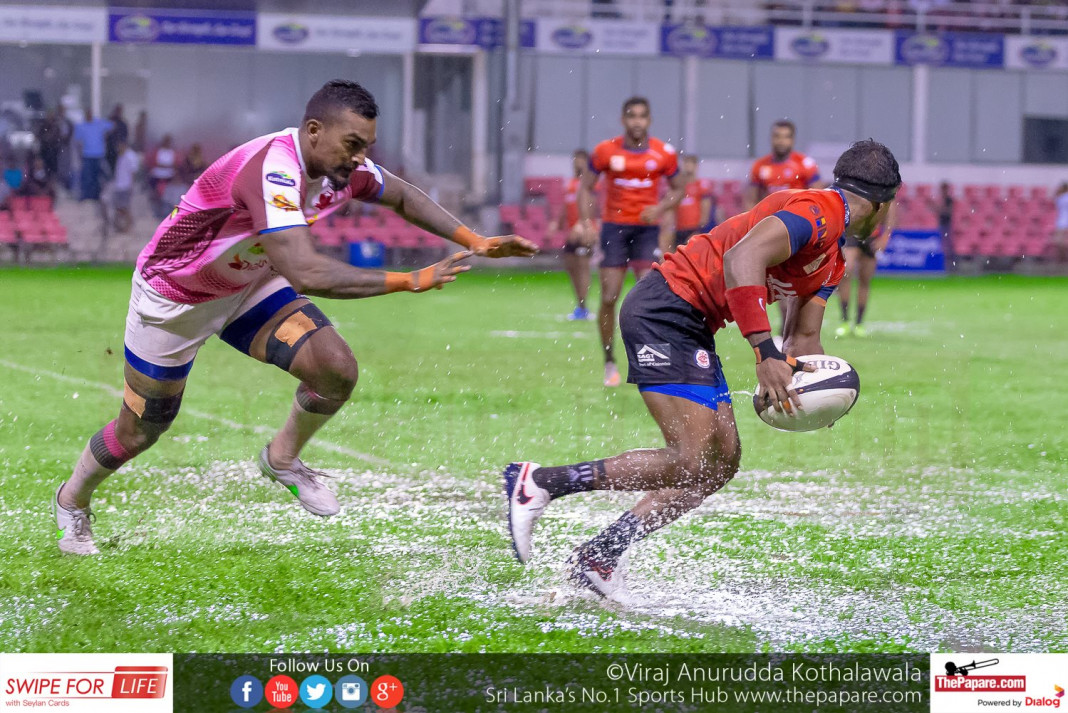On Saturday evening the Dialog Rugby League match of the round kicked off after the daily deluge had left the Havelock sports ground resembling a muddy swamp. Tropical monsoon rugby requires a different mindset, a refined skill set and an adjustment to the tactics used for dry weather running rugby.
Let us first look at the obvious differences between wet and dry rugby, then the skills needed to take advantage of the conditions will dictate what tactics to apply. The ground is wet, heavy and slippery making it difficult to accelerate or change direction. The ball will be like a slippery bar of soap, hard to pass and even harder to catch. Players and jerseys will be greasy and visibility may be an issue.
The next step would be to highlight the skill sets that need careful attention. To mitigate against the tough under-foot conditions players need to know where to be when the ball is in play so an understanding of your attack and defence shape is key. The patterns of play the team employs must be communicated to your unit, mini unit and your team by the leaders on the field, not just at the beginning of each half but at each set piece stoppage. Front loading is the term currently being used by teams and it means players are ready and in position early to make the next play. Any changing of direction should be done early and the player will always look to accelerate on to the ball and into the space.
Catch and pass, or handling skills will be challenged so it is wise to keep the passes short and sympathetic. Teams can still move the ball into the wide channels but long passes are discouraged. Kicking plays a key role in the wet either for territory, where the kicker will look to find the open spaces away from the opposition, or contestable kicks with a minimum of five seconds hang time will give your chasers time to compete for the ball.
There is an emphasis on low body height into contact with leg drive whether you have the ball in hand, making a tackle or driving into a ruck or maul. Communication levels must increase also as this lets everyone around you know what is happening next and it also keeps the players concentration on. Gaining possession, during the wet and heavy conditions, through a solid set piece and ever ensuring the ball comes as cleanly as possible is even more important when it is raining.
Conversely there are obvious advantages if you are able to put pressure on the opposition’s ball when they have the feed into the set-piece. The set-piece is the foundation on which both attack and defence is built. In defence, if you are able to disrupt the possession, your defensive line will start on the front foot moving forward. And in attack, having a dominant set-piece opens up your options for launching your strike plays.
Rugby pundits always say the game is won up front, in the engine room, at the coalface and that is true to an extent but a fine goal kicker who can turn penalties into points is gold and often the difference between winning and losing. Above all else if teams prepare for the inclement conditions during the week there can be belief in their own game and often that belief can turn into momentum which becomes points on the board.
There was a break in play this week, at the Racecourse ground match between Kandy and Army, because of the proximity of lightning strikes. A break in play is a great opportunity for the leaders and key players on the field to refocus the team and remind the players about their roles, the team plan and give a feeling that we are a team who are together.
A team that plays together, with a game plan that has been practiced during the week, will always enjoy playing their rugby – even in the rain.














